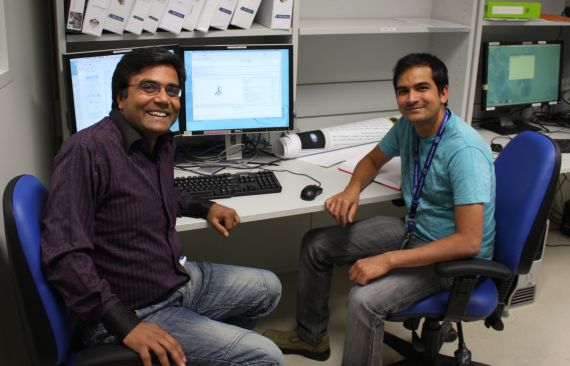Despite being unable to make cups of coffee or arrange pizza deliveries, AutoRickshaw is a crystallographer’s dream come true, solving crystal structures within minutes of data collection.
Solving even the most-straightforward crystal structure typically involves half-a-dozen software packages and a series of carefully-considered decisions. Now Australian Synchrotron users can call on the services of AutoRickshaw, an integrated, automatic decision-making system that evaluates the dataset, decides which software programs to use, works out any problems that arise during structure-solving, and then produces a three-dimensional computer model. AutoRickshaw even offers advice about additional actions that may be required if the data are not good enough to produce a sensible crystal structure.
“It’s really a ‘virtual crystallographer’,” says Santosh Panjikar, a macromolecular crystallography expert who developed AutoRickshaw with his colleagues at the European Molecular Biology Laboratory (EMBL) in the early 2000s. “It works on the principles of ‘as good as necessary, as fast as possible’.”
 Photo L-R: Santosh Panjikar (AS) and Nausad Shaikh (IMB) put the AutoRickshaw decision-making system to the test in November 2011, solving a protein structure in just 18 minutes.
Photo L-R: Santosh Panjikar (AS) and Nausad Shaikh (IMB) put the AutoRickshaw decision-making system to the test in November 2011, solving a protein structure in just 18 minutes.
Now working at the Australian Synchrotron, Santosh has deployed the full AutoRickshaw system here – with the added advantage of the supercomputing power of the MASSIVE high-performance computing facility recently launched at Monash University and the Australian Synchrotron.
“With MASSIVE, it’s a much faster, streamlined process,” Santosh says. “Users can check their structures while they’re here rather than waiting until they get home to find out whether their data are good enough.”
AutoRickshaw passed its first user test in November 2011 when it took just 18 minutes to solve the structure of a protein crystal brought to the AS by Nausad Shaikh from Professor Glenn King's laboratory at the Institute for Molecular Bioscience, University of Queensland. Nausad is part of a team looking at bacterial proteins that could act as potential drug targets. His focus is a bacterial kinase, a type of protein that plays an important role in controlling cell behaviour. This particular kinase is only found in bacteria and not in higher organisms, making it a ideal drug target.
"We knew within one or two minutes that we would actually get a useful structure," Santosh says. "Nausad was still collecting data when AutoRickshaw came up with the result."
AutoRickshaw is available on the synchrotron’s two macromolecular crystallography beamlines, although Santosh says users will first need to learn how to use it. He plans to write a small manual for users and add AutoRickshaw’s graphical user interface (GUI) within the VBL system. The system will also be integrated so that when a dataset is good enough, it will automatically go into AutoRickshaw; if the data are not good enough, the system will alert the user to work on the dataset first before submitting it to AR.
More information is available from Santosh Panjikar.
